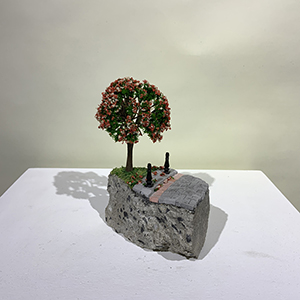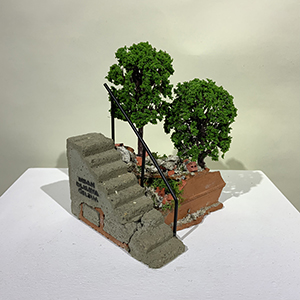 |
 |
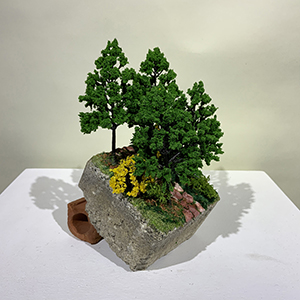 |
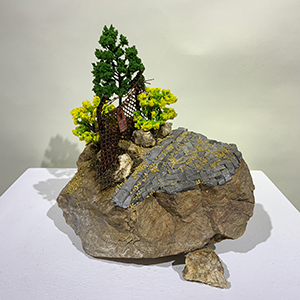 |
 |
|
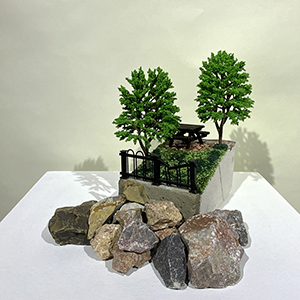 |
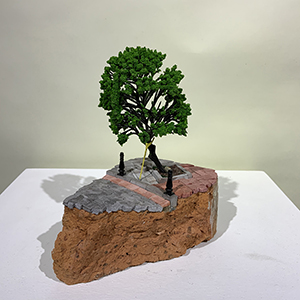 |
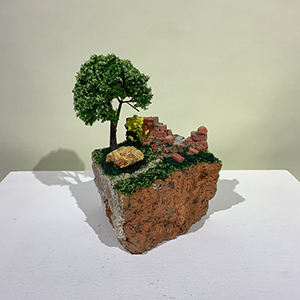 |
Click the images above for more details. |
||
Just as Michelangelo believed that every stone had his own masterpiece contained within it, I believe that each piece of rubble I collect as I wander the city has its own potential to become art. The process of exploring, documenting, and musing upon the things I find, becomes the connective process that forms each work. In a way, the chunks of concrete, marble, brick, and stone around me are my muses, and the city of Istanbul my relentless inspiration.
Continuing from my previous works, inspired by the miniature paintings of the Ottoman and Persian dynasties, On the Rubble of Our Ancestors once again focusses on the narrative and the imaginative process. Inherent within the city, the stories of our lives are a continuous performative act and the urban landscaping the stage on which these acts are played out. However, unlike my previous works, which took a macrocosmic view, On the Rubble of Our Ancestors zooms in, taking intimate excerpts from the city.
Whilst reminiscent of real places, the Lilliputian scale of the work becomes a dissociative process that invites the audience to tap into their child like curiosity and imagine their own narrative. A remnant of the pandemic, we became accustomed to the empty city and the sense of stillness this created. Devoid of people, the street architecture became its own story and the mundane became somehow special. Equally, nature flourished without the pressure of human intervention. In many ways the work is a celebration of that moment and those incursions of stillness and nature.
At the root of all my work, there is something purely visceral about the materiality of the urban environment. As I wander the city, I love to run my hands along its surfaces and scratch the floor with my feet, to decode its composition and search for the historicity within its layers. In my studio, this process becomes about juxtaposing found objects, with their inherent associations, and simulacra – inventing or appropriating from the language of urban designers and modelmakers to create a believable maquette, as if one were an architect trying to sell a street design concept to a corporate client.
On the Rubble of Our Ancestors assembles the readymade and the found, it revels in the narrative potential, it celebrates in nature and the moment, it dissects the political within a place or an intervention, but most of all it seeks to re-present the stillness of the uncanny moment and invite the audience to re-imagine their relationship to a place.
On the Rubble of Our Ancestors is funded by Arts Council England.
© Richard Bartle, all rights reserved.
